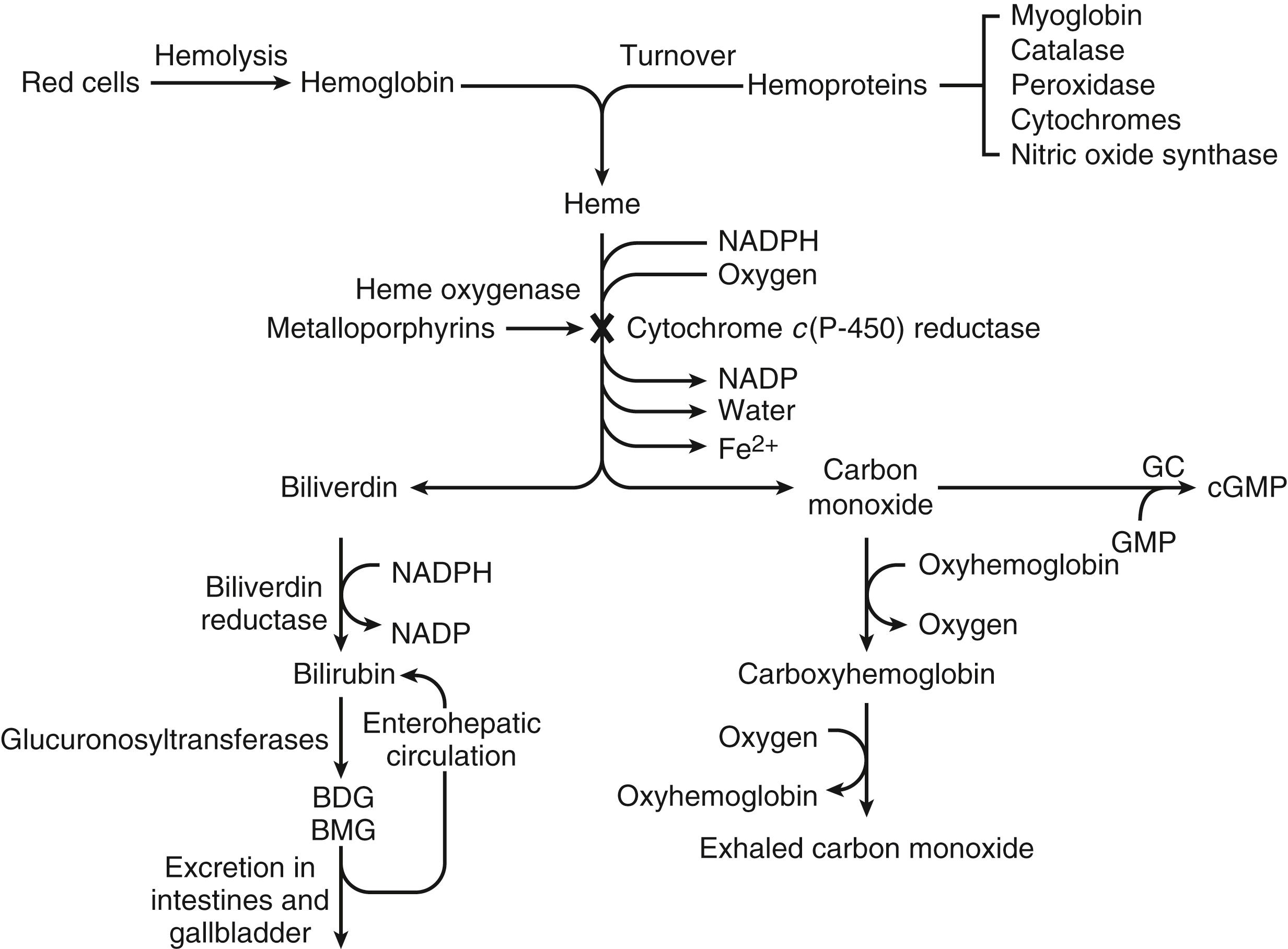Physical Address
304 North Cardinal St.
Dorchester Center, MA 02124
Bilirubin, a neurotoxic pigment, is the end product of heme catabolism in mammals. In adults, bilirubin is extensively metabolized by hepatic UDP-glucuronosyltransferase (UGT) 1A1 and thereby cleared from the body almost immediately. Expression and function of UGT1A1 is much less in the neonatal liver, allowing accumulation of unconjugated bilirubin in the body. Mild hyperbilirubinemia is commonly observed in human neonates. However, neonates who develop severe hyperbilirubinemia have a higher risk for kernicterus, an irreversible brain injury caused by invasion and accumulation of bilirubin into the brain. This chapter summarizes metabolism of bilirubin in the fetus and in neonates, which is important to the understanding and prevention of neonatal hyperbilirubinemia and kernicterus.
Heme proteins are a family of metalloprotein that contain a heme moiety, which consists of an Fe 2+ ion in the center of porphyrin protoporphyrin−IX. Among a number of hemoproteins, hemoglobin, the main component of red blood cells and transporter of oxygen and carbon dioxide in the blood, is the largest contributor to the production of heme and its catabolite bilirubin. The first catabolic reaction is mediated by heme oxygenase‐1 (HO-1), which metabolizes heme, producing α-hydroxyheme, α-verdoheme, ferric biliverdin, and then biliverdin. While it is the end product of heme catabolism in some species such as birds, reptile, and amphibians, biliverdin is further metabolized to bilirubin by biliverdin reductase in mammals ( Fig. 90.1 ). Compared with healthy adults or older children, newborn infants have an increased rate of bilirubin production, and preterm infants generally have higher rates of bilirubin production than term newborns. , Catabolism of 1 mole of heme to 1 mole of bilirubin releases 1 mole of carbon monoxide (CO); thus the rate of bilirubin formation can be estimated from the rate of carboxyhemoglobin production or by trace gas analysis of CO in expired breath. Approximately 80% of bilirubin is converted from the breakdown of hemoglobin in senescent red blood cells and prematurely destroyed erythroid cells in the bone marrow. The remainder originates from the turnover of various other hemoproteins found in other tissues, primarily the liver and muscles. ,

Become a Clinical Tree membership for Full access and enjoy Unlimited articles
If you are a member. Log in here